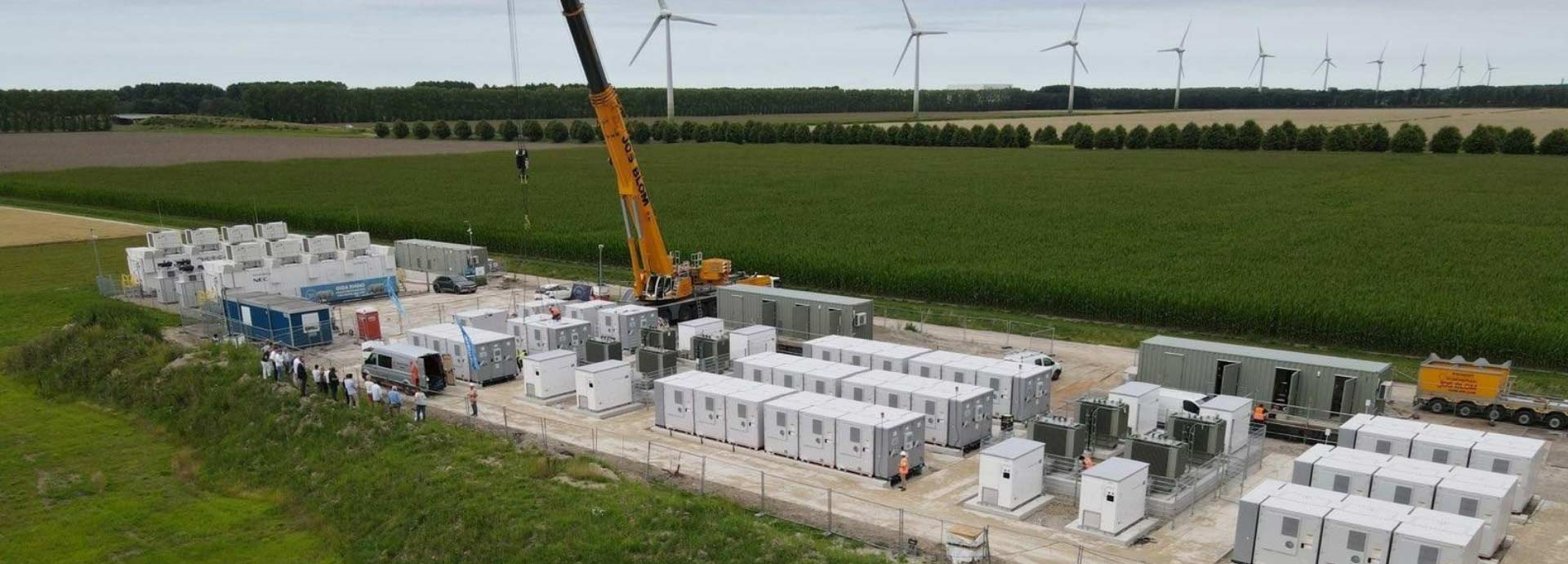

Wärtsilä’s energy storage technology is facilitating a sea-change in the Dutch energy market by enabling sustainable energy producers to meet demand quickly and cost effectively.
For more than one thousand years, windmills have powered land reclamation projects as well as industrial processes such as grain production and timber milling across the Netherlands.
Many of these structures are still operational, although now the power of the wind is harnessed by wind farms that have (alongside solar parks), become almost as much a part of the Dutch landscape as their iconic predecessors.
This is important because in 2019, the Dutch government set targets to reduce greenhouse gas emissions by 49% by 2030, and achieve a 95% reduction by 2050. The Netherlands has also committed to eliminating natural gas from its energy mix entirely in favour of cleaner sources.
The growth of renewable energy generation in the Netherlands and across Europe has played a vital role in decarbonising energy production. The uptick in renewable energy adoption has also prompted the need for energy storage to help stabilise the power grid during moments of excess energy generated by these cleaner alternatives. To achieve its renewable energy targets, reports in 2021 indicate that the Netherlands will need to install between 29 and 54 gigawatts (GW) of energy storage capacity by 2050.
Required: financial support to energy storage
Storage with efficient management systems and digital controls is a crucial element of a reliable, flexible and affordable energy system. Initiatives supporting the deployment of advanced energy storage technology continue to grow, but these initiatives require financial support to succeed.
For example, sustainable energy companies in the Netherlands face a considerable commercial challenge from government rules on energy transmission. Producers in the Netherlands don’t pay taxes when they produce energy, but this exemption does not extend to consumers.
So when a leading Dutch renewable energy customer who will be the proud owner of a 25 megawatt (MW) / 48 megawatt hour (MWh) energy storage system supplied by Wärtsilä takes energy from the grid, it is charged as a consumer.

“It costs approximately 70,000 EUR a year in transmission charges for one megawatt, for which the total revenue is around 120,000 EUR,” explains Maarten Quist, COO GIGA Storage. “That is clearly not a sustainable business model.”
The energy storage system helps to solve this issue as it is co-located with wind and solar assets. The system is located at the Wageningen University & Research’s test centre in Lelystad.
Energy storage and asset control are crucial elements of a reliable and affordable energy system.
“As we charge the batteries with solar and wind energy from these parks and discharge when there is no solar or wind energy, there are no transmission costs as we are not consuming from the grid,” says Quist.
GIGA Storage is optimistic that transmission charges will eventually change to facilitate larger projects. However, the current rules underline the importance of flexible technologies.
“We are always looking at new storage options,” adds Quist. “We started with a battery that could be charged or discharged for only 30 minutes. The new GIGA Buffalo battery project by Wärtsilä can be charged or discharged for up to two hours and we anticipate demand for four- and six-hour systems as more renewables are added onto power grids.”
Another attractive feature of the GIGA Buffalo system, is that it can be activated in a matter of milliseconds, which means it can feed into the grid much faster than coal-fired plants.
A pioneering project
This is Wärtsilä’s first project in the Netherlands and one of the first of its kind anywhere in central Europe. As the largest energy storage project in the Netherlands to date, it will store the equivalent of the annual energy consumption of more than 9,000 households each year and reduce annual carbon dioxide emissions by up to 23,000 tonnes.
Kenneth Engblom, Vice President Africa & Europe at Wärtsilä Energy says Wärtsilä’s track record over more than 12 years was a key factor in GIGA Storage’s decision to use our technology. “Our global storage fleet exceeds 4.5 GWh across 110+ locations and our GEMS Digital Energy Platform has been deployed across in excess of 110 sites,” he says. “GIGA Storage was looking to work with a partner with a long-term strategy and a commitment to achieving a 100% renewable future.”
Did you like this? Subscribe to Insights updates!
Once every six weeks, you will get the top picks – the latest and the greatest pieces – from this Insights channel by email.


